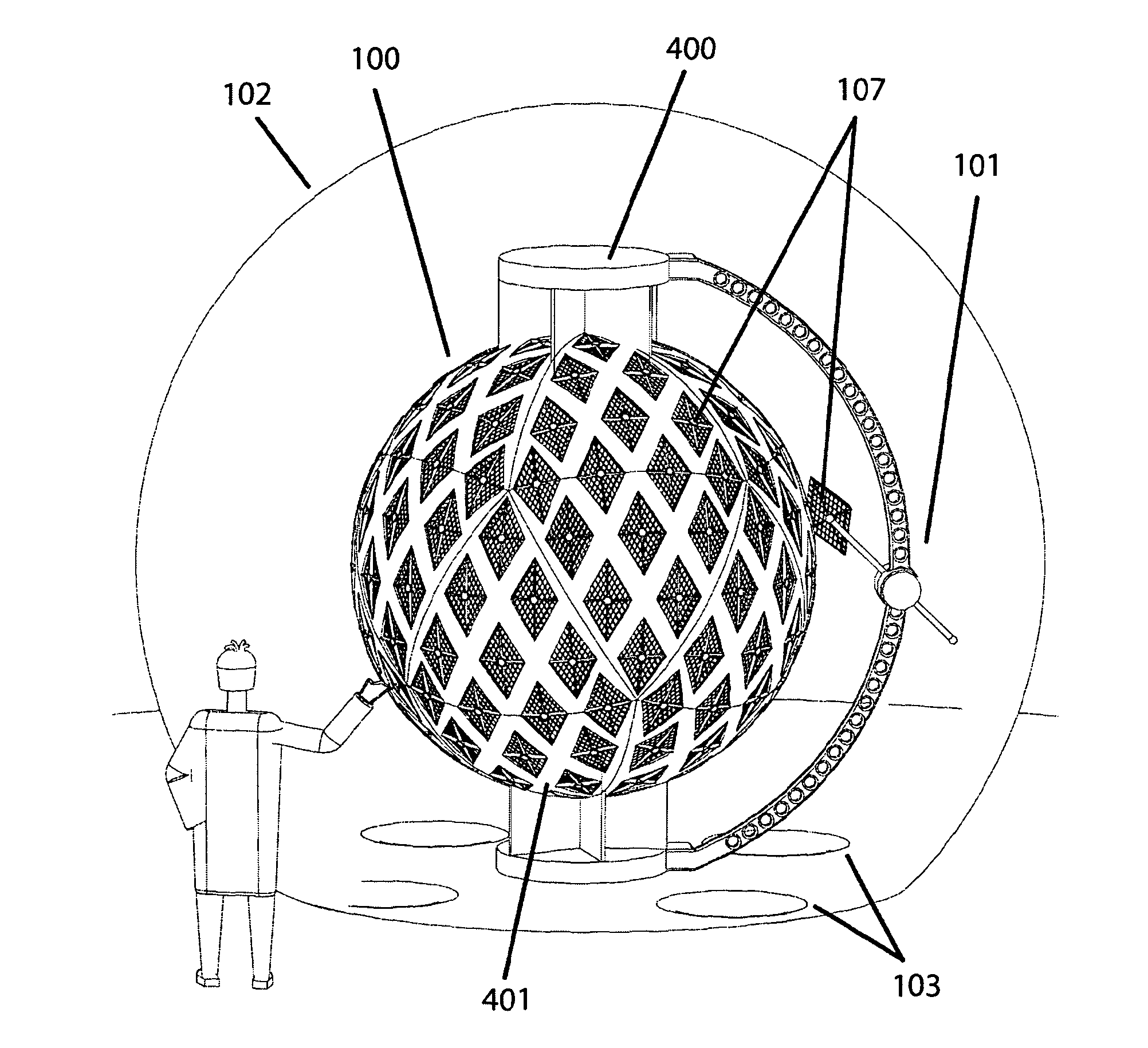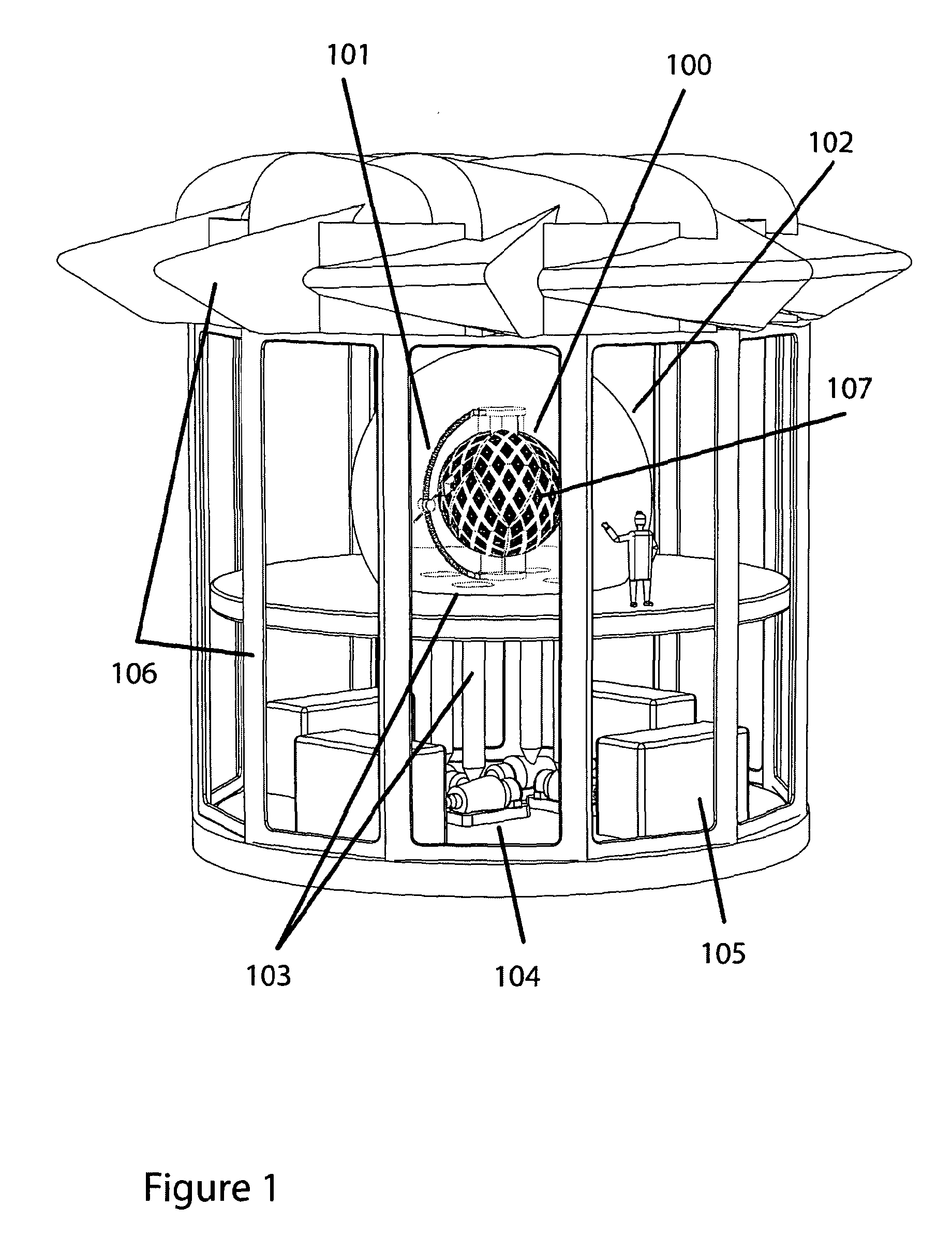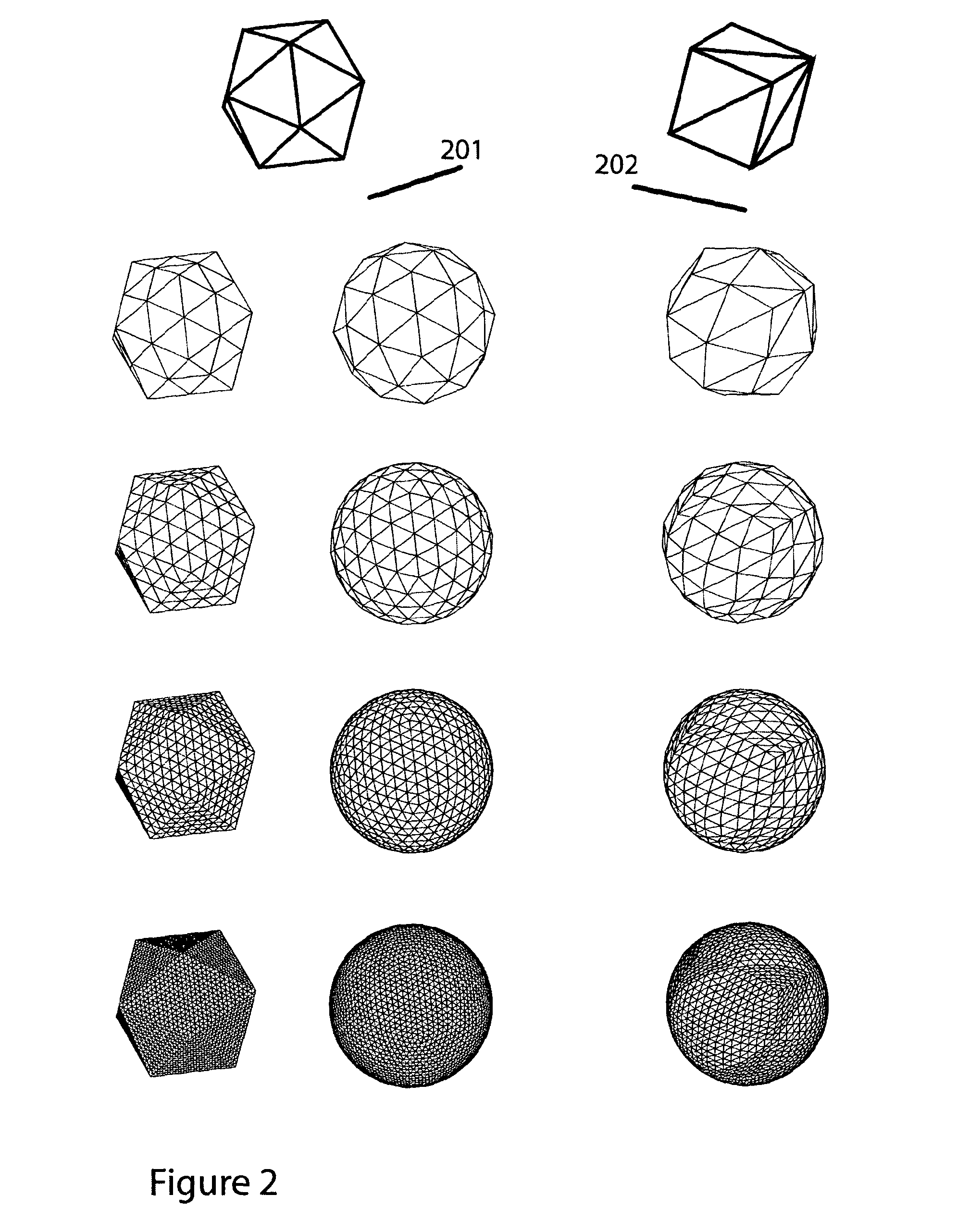Geodesic Massively Parallel Computer.
a computer and massive parallel technology, applied in the field of geodesic massive parallel computers, can solve the problems of incompatibility of processor arrangement, inability to match, and inability to completely homogenize latency and bandwidth between processors, so as to reduce interconnect distance, improve performance, and reduce communication latencies
- Summary
- Abstract
- Description
- Claims
- Application Information
AI Technical Summary
Benefits of technology
Problems solved by technology
Method used
Image
Examples
Embodiment Construction
Summary of Invention
[0019]The present invention provides methods for massively-parallel computer implementation in which processing elements are spatially packed in a spherical, geodesic arrangement as depicted in FIG. 1. In contrast to conventional orthogonal 2D or 3D computer arrays without any direct geodesic mapping or central void, the present invention implements a spherical, hollow shell. Form fits function: the arrangement is an excellent analogue of the earth's ecosphere. The invention enables a very large number of processors to operate with greatly reduced interconnect distance thereby achieving lower communication latencies and high performance. Two basic physical topologies, or modalities of communication, are supported: annular mesh within the sphere's shell, and radial communication from or through the centroid of the sphere.
[0020]For concentric communication flows around the sphere, best and worst-case neighbour-to-neighbour distances are short and similar. Given thi...
PUM
 Login to View More
Login to View More Abstract
Description
Claims
Application Information
 Login to View More
Login to View More - R&D
- Intellectual Property
- Life Sciences
- Materials
- Tech Scout
- Unparalleled Data Quality
- Higher Quality Content
- 60% Fewer Hallucinations
Browse by: Latest US Patents, China's latest patents, Technical Efficacy Thesaurus, Application Domain, Technology Topic, Popular Technical Reports.
© 2025 PatSnap. All rights reserved.Legal|Privacy policy|Modern Slavery Act Transparency Statement|Sitemap|About US| Contact US: help@patsnap.com



